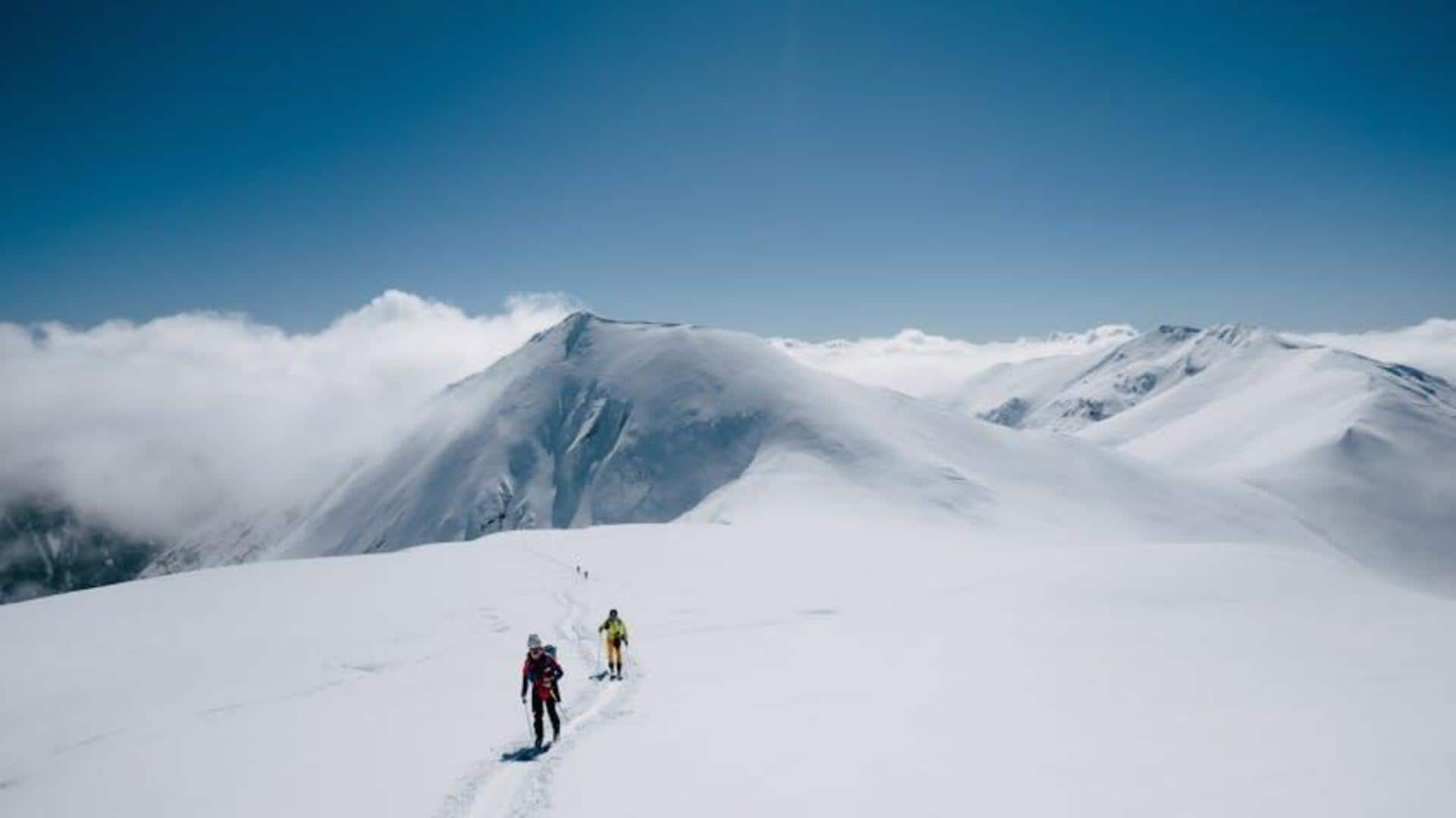
Glacier hiking in Iceland: An unforgettable experience
What's the story
Glacier hiking in Iceland is unlike any other experience. The eerie silence that surrounds these frozen lands adds to the adventure. The expanses of ice and snow absorb sound, giving the hikers an overwhelming sense of solitude. This is one of the few activities that lets adventure lovers connect with nature in its rawest form. One can also discover stunning beauty and geological wonders of Iceland's glaciers.
Glacier selection
Choosing the right glacier for hiking
Selecting the right glacier is key to a successful hike. Popular options are Vatnajokull, Europe's largest glacier, and Solheimajokull, famed for its accessibility. Each glacier presents a different terrain and difficulty levels, making them ideal for both beginners and experienced hikers. Researching these options ensures that you pick a place that matches your skill level and interests.
Gear essentials
Essential gear for glacier hiking
Proper gear is a must when going on a glacier hike. Crampons are a must for traction on icy surfaces, while an ice axe gives you stability while climbing steep areas. Layered clothing helps keep your body temperature in check in changing weather conditions. A helmet protects you from falling ice/rocks. Renting equipment from local outfitters can be budget-friendly if you don't own specialized gear.
Weather awareness
Understanding weather conditions
Weather conditions on glaciers can change rapidly, so it's important to stay informed before setting out on a hike. Checking forecasts regularly helps anticipate potential hazards such as storms or sudden temperature drops. Guides often have up-to-date information about weather patterns specific to each glacier area, ensuring safer hiking experiences.
Guide assistance
Hiring experienced guides
Hiring an experienced guide for glacier hikes is key to keeping everyone safe. They provide expert knowledge on navigating terrain and identifying risks like crevasses or unstable snow bridges. These hazards may not be apparent without the training and guidance from professionals. Their expertise is derived from conducting successful expeditions in similar icy environments around the world.